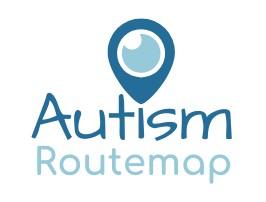The salt and pepper approach to managing emotions

Salt and pepper, knives and forks, socks and shoes, hot chocolate, and marshmallows. There are some things which just go together … although the jury is still out on hot chocolate and marshmallows.
Each of these things has a unique function. If you run out of salt, you can’t improve the taste of food with extra pepper. Two knives don’t make for easy eating and an extra pair of socks won’t cut it if you’ve forgotten your shoes.
Synergy is defined by the Oxford dictionary as “the interaction or cooperation of two or more organisations, substances, or other agents to produce a combined effect greater than the sum of their separate effects.”
When it comes to our emotions, we are similarly equipped with two complimentary systems that work in a synergistic way.
On the one hand, we have neural pathways in a part of the brain known as the limbic system. These neural networks help us to make sense of our world. They underpin our emotional responses, memories and biological functions that relate to our mood (such as, increased heart rate, breathing and sweating).
Your limbic system sends messages which empower you to jump out of the way of an oncoming car, avoid eating rotten food and yell at the reckless driver on the road.
These emotional responses are very strong because one of their primary functions is to help keep you safe. If you were to try and calculate the time to impact as a car barrelled towards you, the likelihood of staying alive would be slim. Far more effective to have a fear response which enables you to jump out of the way before you’ve even had time to think.
In situations where you are in mortal danger, you don’t need to think. Your limbic system does a great job of enabling you to react. But most of the time, we are facing things that are more complex and our limbic system alone doesn’t provide the solution.
We are not always dealing with physical threats. Rather, we are hurting in our relationships. We are paralysed by a fear of failure. We are frustrated by colleagues and angered by events on world stages.
In response to these everyday situations, we need more than just our limbic system. We need access to a different set of neural pathways. We need the help of our rational, logical, analytical, thinking ability.
Psychologist and best-selling author of “Thinking Fast and Slow”, Daniel Kahneman, coined the terms System 1 and System 2 to describe the different processing mechanisms in our brains. System 1 is our fast-processing system which includes emotional processing as well as other things like instinct, beliefs, intuition, and prior learning. System 2 is our slower processing system and includes operations like reason, deliberation, logic and analytical thinking.
Systems 1 and 2 have different functions and like salt and pepper, they are best used in tandem when it comes to achieving desirable outcomes.
What often happens though, is that we defer to the louder emotional responses of System 1 and forget the power of System 2. Instead of using System 2 functions to help us navigate our way through problems, we let our thinking align with the messages from the limbic system.
And so, we get stuck. Stuck in thinking how bad it is, how unfair it was or how we will never find a way forward.
To illustrate the need for both systems, I sometimes compare our limbic system to that of paramedical services and our thinking response to that of hospital doctors. When there has been a car crash, we need both of these services to work in tandem.
The paramedics need to work fast to keep the person alive and get them to hospital as quickly as possible. Once they are in the hospital, the work of the paramedics is done. The doctors need to investigate what is actually wrong and decide how they are going to make the person well.
In the same way, once your limbic system has alerted you to the presence of a problem, there is a need (in non-life-threatening situations) to use your thinking skills. To recognise your triggers and decide on a course of action that considers the consequences. Using this slower response system takes time and effort.
So, rather than responses that are based on either reactions or “head” decisions, we need to develop the skill of using information from both systems. This is how we move forwards.
John Churton Collins said that “half our mistakes in life arise from feeling where we ought to think and thinking where we ought to feel”. I wonder if we could greatly improve things by allowing ourselves to do both? That way we can truly achieve a combined effect that is greater than the sum of the separate parts.
To synergy!
Linda
Linda is a Speech and Language Therapist with a Masters in Human Communication. She works with neurodivergent people who want to develop their emotional well-being, communication & people skills.
Exciting news!
We are running a FREE webinar on Friday, 2nd July - "Tools & Strategies to Support Neurodivergent People in Managing Stress & Overwhelm".
You'll learn more about your body's stress management system and Katie Jo Gracie will be talking about the use of Essential Oils to support your health and wellness.
Katie Jo is an Actually Autistic wellness advocate with a background in functional nutrition and using essential oils to support people in health and wellness. Click here to register:
https://www.autismroutemap.com/pl/2147504224

